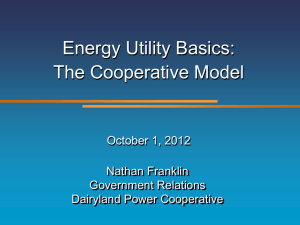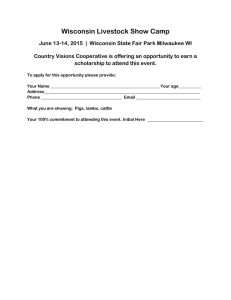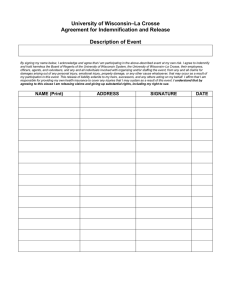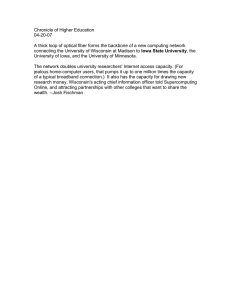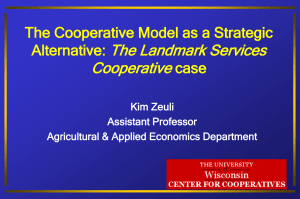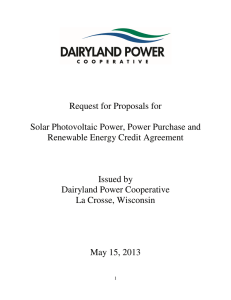Brian Rude
advertisement
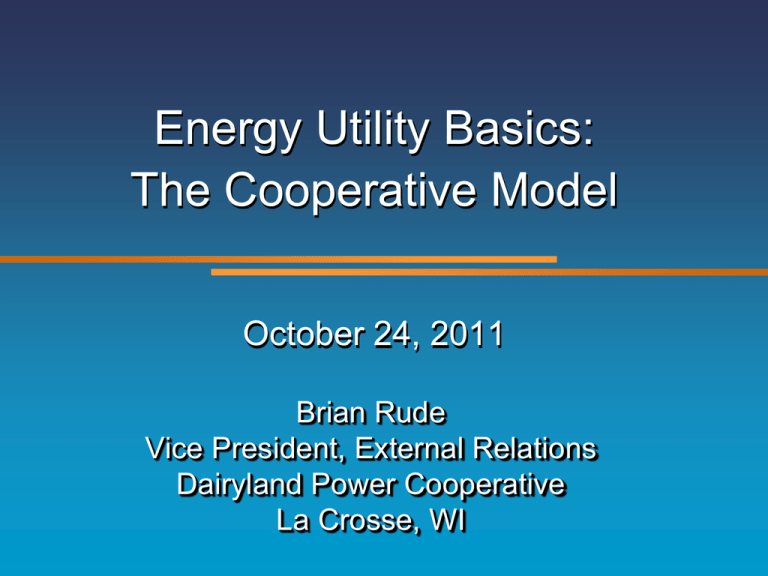
Energy Utility Basics: The Cooperative Model October 24, 2011 Brian Rude Vice President, External Relations Dairyland Power Cooperative La Crosse, WI • • • 1930 – only 11% of farms had electricity Depression limited development options Growing population demanded better rural economy • • • 1935 Executive Order created the Rural Electrification Administration to fund local electric systems Congress formalized in 1936 Local cooperatives developed and built system • • • First system in Wisconsin was Richland Electric in 1937 By 1945, today's network of 24 Wisconsin cooperatives in place 520,000 residents served • • • • • 930 cooperatives in 47 states 42 million people, 11% of the population 10% of kilowatt hours 43% of all power lines in country 7 customers per mile compared to 35 for IOUs and 47 for municipals Cooperative Model • Owned and controlled by consumers • • • • served Governed by board of directors, elected at annual meeting One member, one vote Not for profit Revenues over budget called "margins" are returned to customers Organization of Cooperatives • 864 distribution cooperatives • There are 66 generation and transmission cooperatives (G&Ts) serving distribution co-ops; others buy from other sources (TVA, IOUs, etc.) Touchstone Energy Branding Wisconsin • Six cooperatives purchase from • other sources 18 are members of Dairyland Power Cooperative, Wisconsin’s only G&T MN WI IA IL Dairyland Power Cooperative Service Territory • • • Dairyland headquartered in La Crosse Generating facilities in Alma, Genoa, Ladysmith, Elk Mound, and Eau Claire, Wisconsin and Adams, Minnesota Serve 253,000 meters representing 600,000 people Renewables on the Dairyland System • • • • • Wind (Iowa and Minnesota) Landfill gas (Iowa and Wisconsin) Manure digesters (Wisconsin) Hydroelectric (Wisconsin) Biomass (Wisconsin) 44 MW 15 MW 4 MW 24 MW 40 MW Renewables on the Dairyland System (cont.) • Small consumer-owned systems • 231 total as of July 1, 2011 • Includes 90 wind, 140 solar and one mini-hydro Challenges Facing the Industry • Greenhouse gas legislation and EPA rules • • • resulting in environmental upgrades to existing plants Cost of fuel, transportation for coal New renewable facilities to meet mandates and prices of renewables New transmission facilities for growth, renewables
